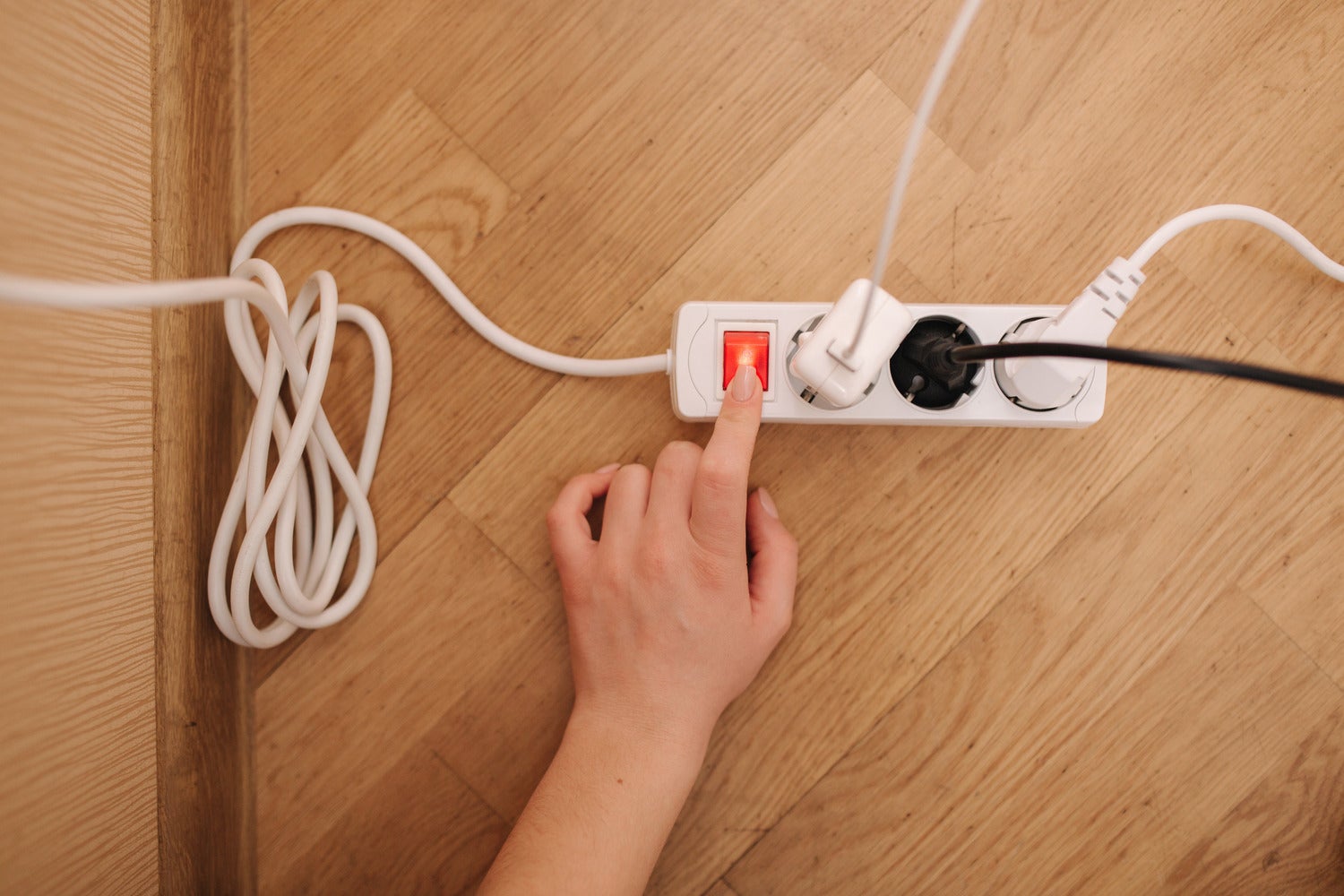It’s time to go hunting for vampires. No, you don’t need to whittle a wooden stake—just be on the lookout for plugged-in devices that continuously draw electricity when you’re not using ’em.
From TVs to smart speakers, sneaky energy-siphoners are everywhere, and they’re a real problem. According to the Lawrence Berkeley National Laboratory (BNL), vampire power, also known as idle load or standby loss, accounts for 5% to 10% of household energy use. Based on 2023 electrical consumption and rates, that means the average customer is paying at least $70 or up to $220 annually squeezing juice they’re not using. BNL estimates that standby power is responsible for about 1% of global carbon emissions—equivalent to the tailpipes of some 15 million gas-powered cars.
That’s a ton of waste going toward literally nothing. So how can you drive a stake through the phantom draws? Here’s what to know about vampire power—and how to minimize it in your home.
What is vampire power?
Most household electronics and appliances consume electricity when they’re plugged in but not in use. This wasted energy earned the nickname vampire power because of the steady, merciless way in which it’s drained.
Nearly all modern devices are guilty of leeching some power. If it has an internal clock or digital display, like a coffee maker or microwave, it’s drawing energy. A sleeping laptop or anything else that exists in a standby mode does, too. Hell, most plugged-in USB bricks will consume something even when not tethered to a phone or computer. Devices like routers and large appliances like water heaters and HVAC systems sip standby power as well.
Vampire power has always been a concern. But these days we’re inviting so many more energy-sucking gadgets into our homes—devices that exist in standby, hang out on Wi-Fi, or otherwise await voice or remote commands in the name of convenience. Consider that, as of 2023, the average American household had 17 smart devices. “In the days before remotes you’d click the television off manually and it was off, but now these devices are waiting for a signal from a remote so they can turn on instantly, and that’s the power draw,” says Eric Hittinger, chair of the department of public policy at Rochester Institute of Technology.
Many vampire devices draw as little as 0.5 watts per hour in standby, with only a handful of larger offenders like printers and cable boxes gobbling up 10 times that. So why the big fuss? It’s about the cumulative effect. If we’re being super conservative and go with BNL’s lower estimate of how much standby power we use, American homes needlessly spin their meters to the tune of 70 billion kilowatt-hours annually—wasting roughly $9 billion in the process. These little energy suckers look like a pretty big environmental problem in that light. After all, with 60% of the U.S. grid still powered by fossil fuels, you can think of standby power as needlessly burning dead dinosaurs.
How to stop the bleeding
It’s pretty much impossible to eliminate all the vampire draws in your home. But there are a few ways to lessen the overall energy leakage.
Set up a central charging station
Since every power brick that comes with a new phone or laptop draws power when it’s plugged into the wall, Hittinger sets up charging stations in the house, using one power brick with multiple USB plugs instead of a raft of solo chargers each hogging its own outlet. This, he says, is more efficient than having several spread throughout the house. Such minor adjustments can train you to be more mindful of the bloodsuckers.
Unplug the major hogs
No, it really doesn’t make sense to plug in the microwave every time you nuke a burrito. But it’s reasonable to, say, unplug a powered-off gaming system for the night or pull the brick of a charged laptop to prevent the power drain. According to BNL, the main offenders are set-top boxes, laptops, printer and fax machines, and DVD/VCRs. These devices consume a median of 5 watts per hour, which means one can use 43,800 watts or an additional 43.8 kilowatt-hours per year.
Trip those power strips
By design, power strips allow you to protect and control the electricity going to multiple devices at once. You can, for instance, plug your home entertainment system into one and when you’re done falling asleep in front of Netflix for the night, simply flip the strip’s master switch to cut off the whole shebang.
Modern strips offer additional aid. App-connected plugs let you switch off independent devices and set shut-off timers from your phone. Alternatively, a type of power strip called a master control looks to a single device to dictate the power of the rest of the plugs. This way you can, say, automatically power down vampiric peripherals in the office when you shut off the computer and lay the workday to rest.

